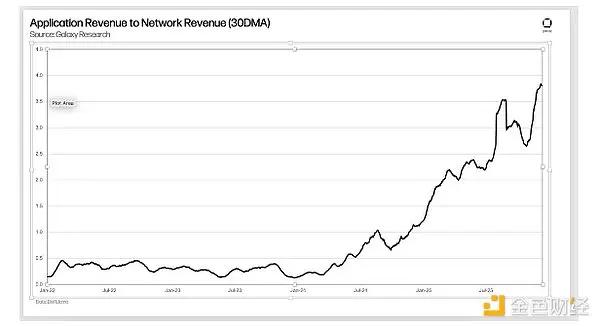Author: SubQuery Network
Compiled by Yuliya, PANews

The Altcoin market has always been known for its cyclical fluctuations, with extreme peaks and deep corrections. Since the birth of Bitcoin in 2009, the market has experienced multiple cycles, each influenced by different factors. While some elements remain unchanged, such as the four-year Bitcoin halving cycle, each cycle also introduces new dynamics that alter the way the market operates.
As the new market cycle approaches in 2024-2025, the general consensus is that this one will be different from the past. From institutional adoption to changes in retail participation, multiple factors are giving this cycle a unique character. The following will analyze why this cycle is unfolding differently from the past and what it means for investors and builders.
Review of the Traditional Altcoin Market Cycle
The Altcoin market cycle typically follows this pattern:
Correction/Bear Market: The market returns to reality, accelerating profit-taking, and the liquidity of speculative assets dries up.
Frenzy/Peak: The market overheats, speculative sentiment dominates, and Altcoins experience extreme price surges.
Expansion/Bull Market: Optimistic sentiment returns, prices rise, and media coverage attracts new retail investors.
Accumulation Phase: After the bear market, smart money and long-term holders accumulate assets at low prices.
This pattern has played out repeatedly, from the boom and bust of 2013 to the ICO frenzy of 2017 and the 2021 bull market driven by DeFi, Non-Fungible Tokens, and institutional interest. However, the 2024 market cycle is presenting a different landscape, with some unique forces reshaping the market environment.
Institutional Adoption Driving Bitcoin's Strength
The biggest difference in this cycle is the role of institutional capital. Unlike previous bull markets driven primarily by retail speculation, this cycle has witnessed large-scale institutional adoption:
Growth of the Derivatives Market: The expansion of Bitcoin futures and options trading has made the market more structured and liquid, with lower volatility than previous cycles.
Corporate and Sovereign Interest: Large companies and even some countries have added Bitcoin to their balance sheets or used it as a hedging tool.
Bitcoin Spot ETFs: The approval of Bitcoin spot ETFs in the US has opened the door for institutional investors, allowing trillions of dollars in capital to enter the Bitcoin market in a regulated manner.
As a result, Bitcoin has become the standout Altcoin, firmly entrenched as the "King of Cryptocurrencies," reaching new highs and dominating market liquidity, making it difficult for Altcoins to achieve the same explosive growth as in previous cycles.
Market Dilution: Surge in Altcoin Supply, Diminishing Returns
In previous cycles, the supply of newly launched Altcoins was relatively low, creating opportunities for explosive growth. However, this time, the number of crypto projects has increased significantly.
According to Dune Analytics, as of the end of January 2025, there were over 36.4 million circulating tokens, compared to around 3,000 in 2017-2018. The reasons for this change include:
Token Unlocks: Many projects continue to release locked tokens, increasing market sell pressure and leading to significant price corrections for most tokens.
Overcrowded Meme Coin Market: Unlike previous cycles where a few Meme coins (such as Dogecoin and Shiba Inu) attracted most of the attention, in 2024 a large number of new Meme coins are launched daily, making it difficult for any single token to maintain market momentum.
Proliferation of Layer 1 and Layer 2: The rise of hundreds of Layer 1 and Layer 2 scaling solutions has fragmented market liquidity.
This market dilution means that while some Altcoins may still perform well, the broad-based rallies where nearly all tokens saw significant gains, as in past cycles, are unlikely to be repeated.
Retail Liquidity Diverted to New Mechanisms
Retail traders have always been a crucial driving force in Altcoin bull markets, but the key difference in this cycle is that retail liquidity is being drawn to new mechanisms beyond traditional spot trading.
The Rise of Pump.fun

Pump.fun, launched on January 19, 2024, has fundamentally changed the behavior of global Altcoin retail investors. The platform allows anyone to create a Solana token for free in one minute, spawning some of the largest Memes of 2024 and attracting retail capital to high-risk, high-return speculative small-cap tokens, away from the major Altcoins.
This dynamic has brought several significant impacts:
Providing More Exit Liquidity for Insiders: Insiders launch new tokens, quickly attracting retail capital, but the constant churn means many retail investors suffer losses before they can transfer profits to the major Altcoins.
Faster Capital Rotation: Retail capital is cycling between new tokens in a matter of hours or days, making it difficult for mature Altcoins to establish sustained uptrends.

As of January 2025, Pump.fun has generated $116.72 million in revenue, surpassing Solana ($116.46 million) and Ethereum ($107.64 million).
What Does This Mean for Crypto Investors?
Although this cycle is still unfolding, a few key conclusions are already clear:
Retail speculative capital is being channeled to new platforms like Pump.fun and innovative on-chain trading mechanisms. Understanding these changes can help traders gauge the direction of liquidity.
Altcoin performance will be more selective. Unlike the past, where nearly all tokens rallied, this cycle will see projects with real-world use cases, strong token economics, and genuine demand emerge as the primary winners.
Due to institutional adoption, Bitcoin remains the dominant force, and many investors will focus on Bitcoin rather than speculative Altcoins.
Conclusion
While the Altcoin market still follows the familiar cyclical pattern, the 2024 market cycle is different from the past. The rise of institutional adoption, market dilution, the shift in retail liquidity, and changes in the macroeconomic environment have collectively shaped a new market landscape.
For investors and builders, adapting to these changes is key to successfully navigating this cycle. The rules of the market have changed, but for those who can discern the flow of capital, opportunities still exist.







